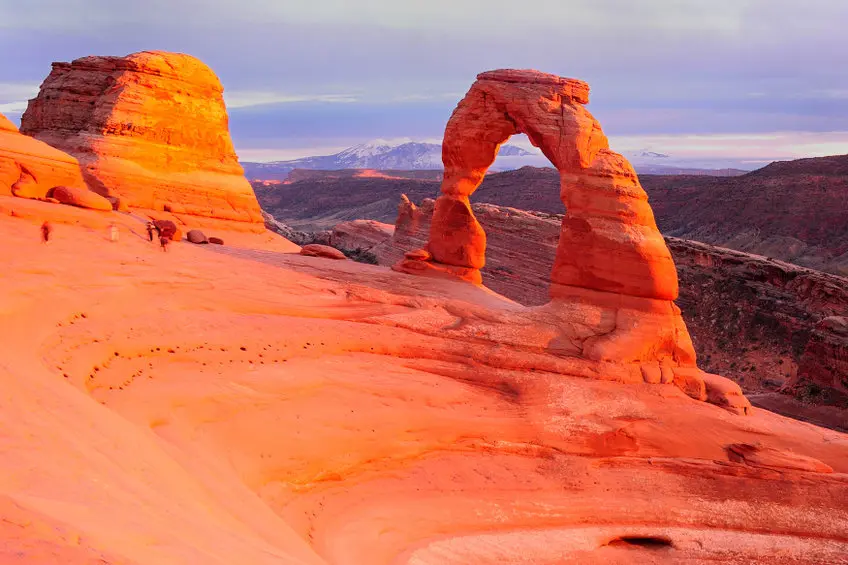


The ancient lands of what we call Moab today have been home to Indigenous peoples for centuries. Archeological evidence tells us Ancestral Puebloans or Hisatsinom (formerly the Anasazi people) possibly lived here as early as 10,000 years ago. Moab today sits on the once-thriving land of Puebloan farming communities dating back to the 11th and 12th centuries. In the 13th century, they left the area for reasons unknown, then nomadic Ute (Nuutsui) Tribes were the ones to encounter Europeans in the Canyonlands area. Ute stands for the “Yutah” people and refers to seven bands from Utah, five bands from Colorado, two bands for Southern Ute, and three bands for Ute Mountain. Throughout Arches National Park, you can find distinctive petroglyphs from about 900 years ago that suggest the Ute once called this area home where they hunted and camped.
The Navajo people were also present in this area and may have arrived as early as 200CE. Arrowheads and spear points have been found indicating hunting of large game. They are difficult to follow because of their expansive migration routes and diverse dialect groups, but the Four Corners region was a likely home for the Navajo as well as the Paiute people. The Paiute probably arrived in the area around 1000CE, and in the late 19th century they merged into five bands: Shivwits, Indian Peaks, Kanosh, Koosharem, and Cedar. The San Juan Band of the Southern Paiute is very closely related to the direct history of Moab and Grand County.
Hisatsinom ancestors are the ancient cliff dwellers from the Four Corners region and lived there as long as 2,000 years ago. The Hopi people descend from the Hisatsinom, having the longest documented history of occupying the Four Corners area. Much of Hopi culture has remained unchanged since the first contact with Spanish explores in 1540CE.
As you can imagine, this area deserves respect and holds great importance to the local community for a very long time. The Ute Tribe called the Moab area “Mohapa,” which means mosquito water. It’s the only town located along the Colorado River and was a frontier outpost in the late 1800s. At this time, Moab was known as a true wild west town, with the infamous Butch Cassidy and his crew known to have a hideout in the area. Moab was incorporated in 1902 but was not recognized by the State of Utah until 1937 with a population of around 800 people.
The Moab area and Grand County today works hard to diversify its economy and the development of natural resources. The untamed area’s beauty and uniqueness was a treasured asset for its original inhabitants, and it remains just as awe-inspiring and valuable today to anyone who sets foot here. It’s a good idea to hire a knowledgeable tour company to ensure you see all these important historical sites that are of interest to you with the respect they deserve. Adventure here in unparalleled, so finding a company that will personalize an experience to you will provide you a trip you will never forget.